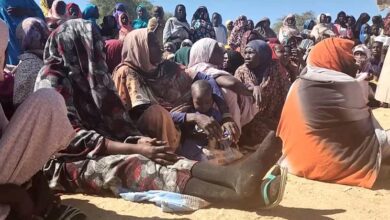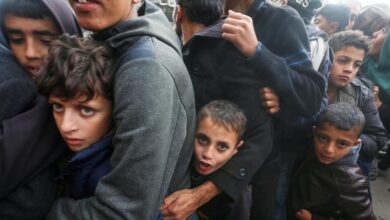Gaza: New air strikes reported in centre, south, as conflict escalates


In an update from the Nasser Medical Complex in Khan Younis, where the victims were taken, former UN aid official Scott Anderson reported witnessed “some of the most horrific scenes” he had ever experienced during his nine months in Gaza.
“There are not enough beds, sanitary equipment, bed linen or surgical clothes, Many patients were treated on the ground without disinfectants, the ventilation system was shut down due to lack of electricity and fuel, and the air was filled with the smell of blood.”, Mr. Andersen, Deputy Humanitarian Coordinator and Director of the United Nations Agency for Palestine Refugees (UNRWA) in Gaza.
Left on the hospital floor
A UNRWA official added that the facility was overwhelmed, receiving more than 100 serious cases in just one day.I have seen toddlers with both legs amputated, children who are paralyzed and cannot be treated, and other children who have been separated from their parents.Parents have moved to the “so-called humanitarian zone” of Al Mawasi in the hope that their children will be safe there, Mr Anderson added.
In a statement, the Israeli military said it targeted a Hamas military commander in Al Mawasi, west of Khan Younis, near the coast. The sandy and coastal area is home to hundreds of thousands of people, including many who were forced to leave Rafah in the southernmost Gaza Strip in early May ahead of an Israeli offensive.
The renewed fighting on Monday in Rafah and central Gaza followed media reports of another attack on a UNRWA school turned shelter on Sunday in the Nuseirat refugee camp. At least 17 people are believed to have been killed in the attack on the school, according to local authorities.
Two more UNRWA schools were attacked last week, among 190 UN agency facilities attacked since the war began.
Misery in the tent
Last Wednesday, the United Nations Office for the Coordination of Humanitarian Affairs, OCHAled an inter-agency delegation to two informal shelter sites in the Al Bureij and Al Maghazi refugee camps in Deir al Balah, central Gaza.
In Al Bureij, OCHA reported that 3,800 people were sharing 388 tents without medical services or basic items including water and hygiene products. In Al Maghazi, more than 1,000 people including seven cancer patients were crammed into a damaged UNRWA school without medical care, water or food.
“My colleagues in the humanitarian community are doing everything they can to increase medical capacity in Gaza, but the obstacles to humanitarian operations prevent us from assisting the population on any scale that is needed,” Mr. Anderson said, before reiterating his call for an immediate ceasefire, the release of all remaining Israeli hostages taken in the Hamas-led terrorist attacks on October 7 and a “meaningful opportunity” to begin healing, while stressing that civilians must be protected at all times.
No escape from aid delays
Many obstacles continue to prevent adequate aid from getting into Gaza, including long delays at checkpoints and a breakdown in law and order among people desperate for food. But efforts to provide referral services, tents, beds, stretchers, disposables and medicines are still underway, he said. Anderson said.
An estimated 1.9 million Gazans face dire conditions as the conflict continues to escalate, with thousands lacking clean water, sanitation and food. latest report from humanitarian agencies.
At a school in Deir al Balah, where 14,000 people are sheltering, there are only 25 toilets, UNRWA noted. The lack of fuel supplies to the area also continues to hamper relief operations and the operation of desalination plants, hospitals and other public services, with only 25 percent of the daily fuel needed for humanitarian operations reportedly entering Gaza so far in July, leading to a 40 percent reduction in public water distribution.
And amid mounting concerns about rising malnutrition among the most vulnerable, the United Nations’ World Health Organization (WHO) warns that lack of access to food, water, sanitation and basic health services is leaving people more vulnerable to disease.
According to the Gaza Ministry of Health (MoH), 152 Palestinians were killed and 392 injured between July 8 and 11. Since October 7, at least 38,345 Palestinians have been killed and 88,295 injured, according to local health authorities in Gaza.




